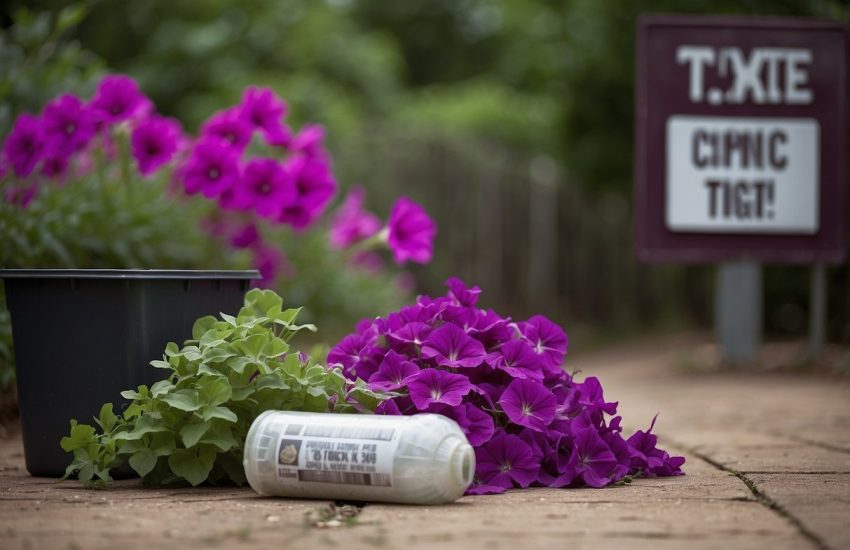How to Plant Dahlias Tubers: A Step-by-Step Guide
Dahlias are a beautiful addition to any garden, with their colorful and intricate blooms. Planting dahlias from tubers is a popular method of growing them, and it’s a relatively easy process once you know how to do it. In this article, we’ll explore the steps involved in planting dahlia tubers and provide some tips to help ensure success.

The first step in planting dahlia tubers is to choose a suitable location. Dahlias prefer full sun and well-draining soil, so it’s important to select a spot that meets these requirements. It’s also a good idea to prepare the soil beforehand by adding compost or other organic matter to improve its structure and fertility. Once you’ve chosen your location and prepared the soil, you’re ready to start planting.
Planting dahlia tubers is a straightforward process, but there are a few things to keep in mind. The depth at which you plant the tubers will depend on their size, with larger tubers typically planted deeper than smaller ones. It’s also important to plant them with the “eye” or growing point facing upwards. With a bit of care and attention, you can enjoy a beautiful display of dahlias in your garden throughout the summer and into the fall.
Preparing for Planting
Before planting dahlia tubers, it is important to properly prepare the soil and choose a suitable location. This section will cover the key considerations when preparing for planting, including selecting quality dahlia tubers, choosing the right soil and location, and timing and weather considerations.
Selecting Quality Dahlia Tubers
When selecting dahlia tubers, it is important to choose healthy, firm tubers that are free from any signs of damage or disease. Look for tubers that have at least one visible eye or bud, as this will ensure that they will grow into healthy plants. It is also a good idea to purchase tubers from a reputable supplier to ensure that they are of high quality.
Choosing the Right Soil and Location
Dahlias prefer well-drained soil that is rich in organic matter. They also require full sun to thrive, so choose a location that receives at least six hours of direct sunlight per day. Before planting, test the soil pH to ensure that it is between 6.0 and 7.0, as dahlias prefer slightly acidic to neutral soil. If the soil is too acidic, add lime to raise the pH, or if it is too alkaline, add sulfur to lower the pH.
Timing and Weather Considerations
Dahlias are warm-season plants that are sensitive to frost. Plant tubers in the spring after the danger of frost has passed and the soil has warmed. In colder climates, it may be necessary to start tubers indoors in pots before transplanting them outside. It is also important to consider the hardiness zone of your location and choose dahlias that are suitable for your climate. With proper preparation and care, dahlias can provide beautiful blooms throughout the summer and fall.
Planting and Caring for Dahlias
Planting Technique
Planting dahlias tubers is easy and straightforward. The first step is to choose a sunny spot in your garden, with well-draining soil. Dig a hole about 6 inches deep and 12 inches wide. Place the dahlia tuber in the hole with the eye facing up. Cover the tuber with soil, leaving about 2 inches of space between the soil surface and the top of the tuber. Water the planting hole well and add a layer of mulch to help retain moisture.
Watering and Fertilization
Dahlias require regular watering, especially during hot and dry weather. Water the plants deeply once or twice a week, depending on the weather conditions. Make sure the soil is moist but not waterlogged. Dahlias also benefit from regular fertilization. Use a balanced fertilizer, such as 10-10-10, every four to six weeks during the growing season. Alternatively, you can use organic fertilizers, such as compost or well-rotted manure.
Support and Maintenance
Dahlias can grow tall and require support to prevent them from falling over. Use stakes or cages to support the plants, especially the taller varieties. As the plants grow, tie them to the stakes or cages to keep them upright. Pinch out the top of the main stem when the plants reach about 12 inches tall to encourage bushier growth and more flowers. Remove any dead or damaged leaves and flowers regularly to keep the plants healthy and attractive.
Troubleshooting Common Issues
Dahlias are generally easy to grow, but they can be affected by a few common issues. Slugs and snails can damage the foliage and flowers, so use slug bait or other control methods to keep them at bay. Some diseases, such as powdery mildew and crown rot, can also affect dahlias. To prevent these issues, make sure the plants have good air circulation and avoid overwatering. If you notice any signs of disease, remove the affected parts of the plant and discard them.

